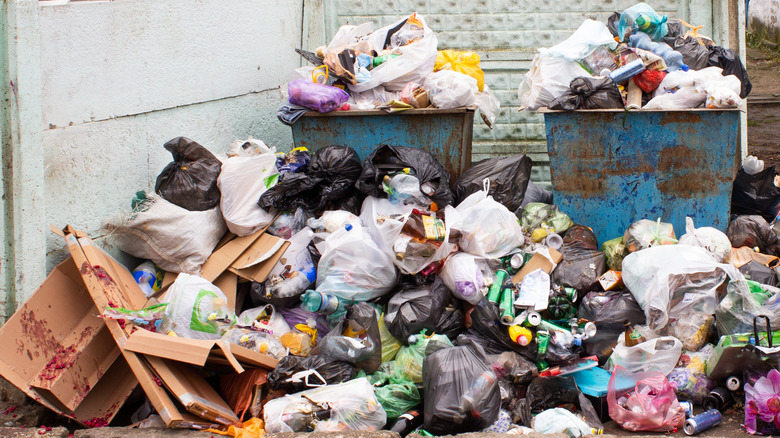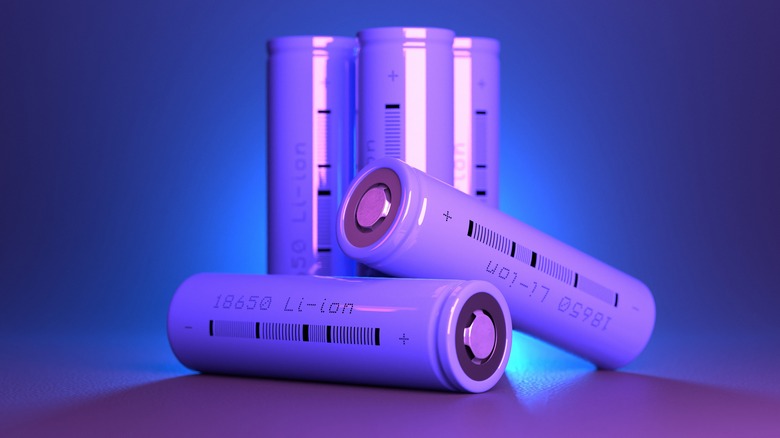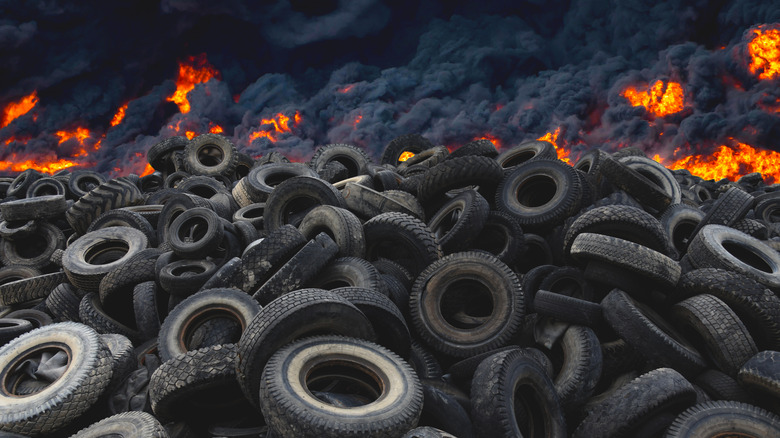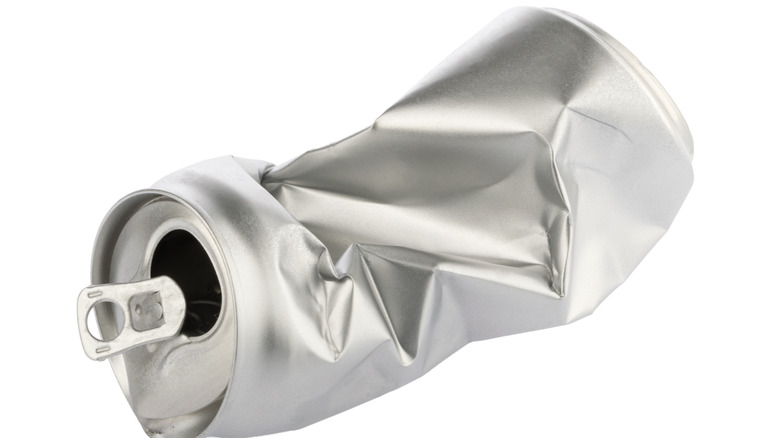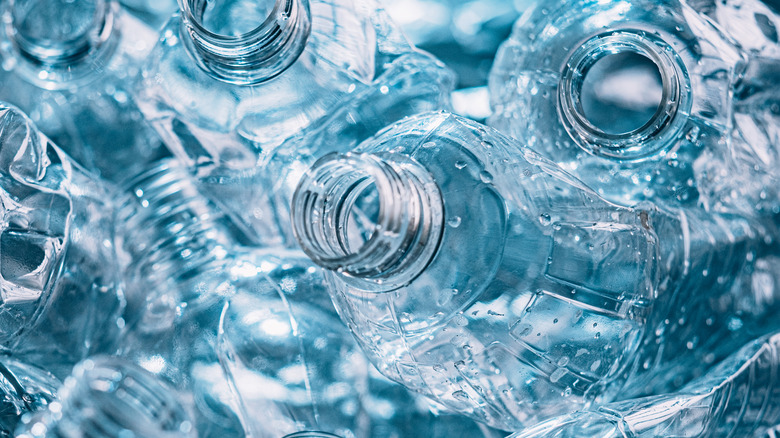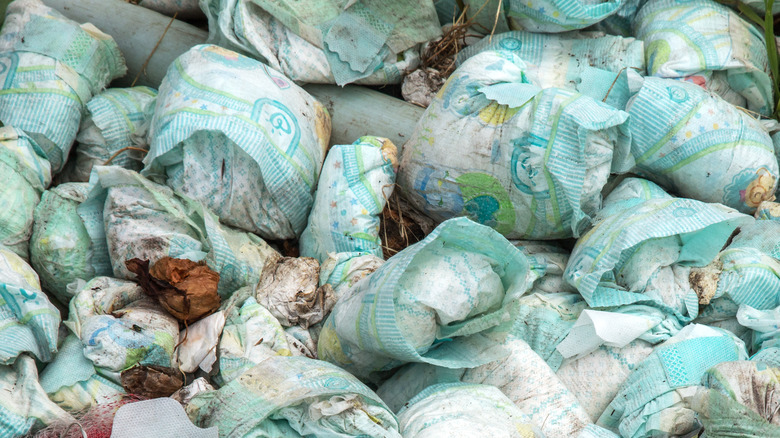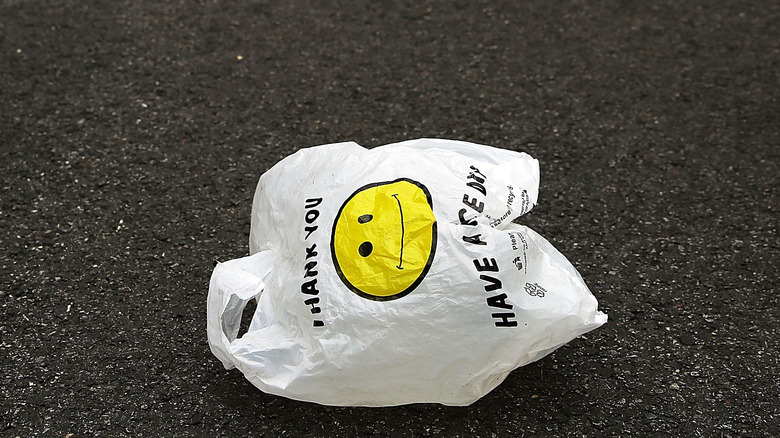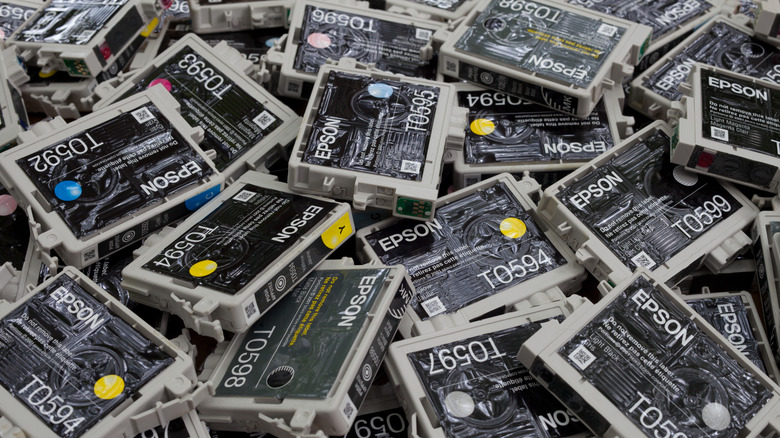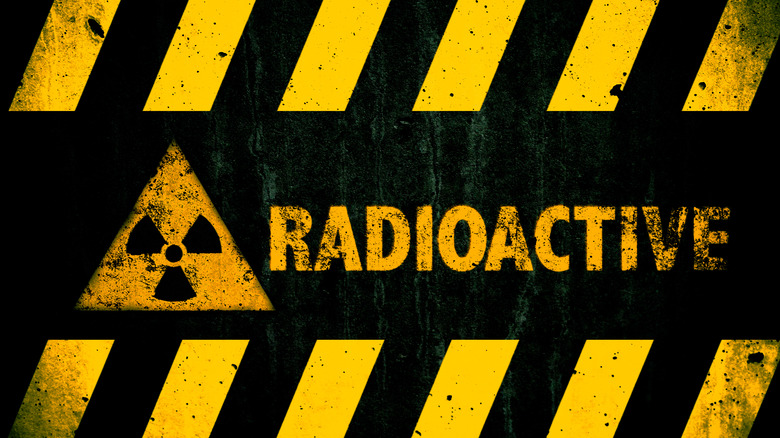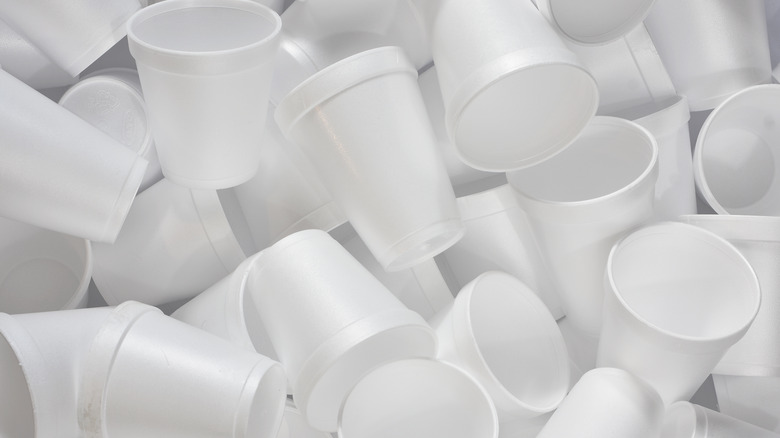Things That Take The Longest To Decompose
When you throw something out, do you ever think about its afterlife? Not all garbage decomposes that fast, if it decays at all. Soda cans can take decades to even start degrading. Plastic bottles and disposable diapers can stick around for centuries. Entire civilizations have risen and fallen in the time these things need to disappear. Glass can linger for a million years (yes, a literal million years). Then there is nuclear waste that will only degrade after millions, sometimes billions, of years. Styrofoam? Never.
What is even worse abut throwing recyclable objects away is that it generally takes more energy to produce more of the material than it does to recycle it. Turning used aluminum cans into new ones only takes 5% of the energy that it would to produce completely new cans, according to the EPA. Re-forming plastic into bottles and cups again uses a third less energy than starting over, and for something more creative, you could fill a ski jacket with stuffing made out of two 2-liter soda bottles. Recycling glass saves such a massive amount of energy that just one reclaimed glass bottle saves enough to keep a light bulb on for hours. Some of the substances that are doomed to haunt the planet nearly forever as trash, like aluminum and glass, are infinitely recyclable.
Earth has tons of waste to contend with. Before you absently toss something in the trash, pause a moment to think how long it's going to outlive you.
Batteries
The one thing remote control cars and actual cars have in common is that they run on batteries (though the car you drive needs a huge one in comparison). When a battery runs out of juice and ends up in its grave, it's going to hang out there for a while.
So how long can you expect a battery to stay intact? It can take up to a hundred years for just the metal on the outside to degrade, according to Sciencing. Hazardous substances then start leaking out and sneaking through the soil and into the water. This is a glaring problem because lithium ion batteries are so commonly used, powering not just your ride, but the gadgets you use for hours on end, such as remote controls, watches, smartphones, tablets, and laptops. Lithium batteries are hazardous enough. Upgrade to lithium ion, which have been known to cause blazing dumpster fires, and you get a chemical blast that can go up in flames.
Even the micro-batteries that keep your phone going aren't going to decompose any differently than something that made an entire vehicle run, but both usually languish in landfills after they die. Chemical & Engineering News reports that hardly any lithium ion batteries are recycled. Take burnt-out batteries to a battery recycling center, because some of the chemicals inside that would otherwise end up as toxic waste can be recovered and reused.
Rubber tires
When a tire busts and rolls into a landfill, it could still be right there with all those soda cans hundreds of years later (via Popular Mechanics). The EPA says that some 25% of tires still head to landfills at the end of their lives. They could end up catching fire when thrown in with piles of other trash.
Tires are such a bane to landfills because they usually end up on the surface and, after inevitably getting there, don't cover other junk evenly. Decomposition of tires is also a painfully slow process. As evidenced by a study published in the National Library of Medicine, microbes have trouble breaking down rubber because they have to put in extra effort to produce enzymes that take apart the molecules in rubber so they can extract the carbon they need for fuel. Some are better at chewing up old tires than others, but many times, additives that are meant to make rubber stronger while it's tearing up the road as a tire can also get in the way of bacteria and fungi trying to make a meal out of it.
Tires can be reused, and the EPA reveals that tire trash which does see another life is most often turned into fuel, or shredded for rubberized asphalt and other construction uses. Those burned as fuel can actually rival fossil fuels in energy output. They can also boost the efficiency of coal — with lower amounts of harmful emissions — and tire rubber can be a lightweight insulation alternative.
Aluminum cans
There's a reason you see recycling bins for cans just about everywhere. Soda and beer cans that get tossed every day can take 200 to 500 years to decompose in a landfill, as the Muncie, Indiana, Sanitary District found. You might want to hold on to that can.
While aluminum can decompose, it obviously does't go anywhere fast. Aluminum holds up much longer than iron because it forms aluminum oxide on the surface when exposed to the elements, according to Stanford University. This happens when aluminum and oxygen atoms bond. In contrast, when oxygen reacts with iron, it will succumb to rust and corrode. Aluminum also refuses to degrade in water, and Stanford scientists found that the reason for this is because atoms in the aluminum oxide shift around to make it unreactive to oxygen or water molecules. That explains why those cans are yet another thing turning our oceans into cesspools of garbage.
The EPA reports that about 2.7 million tons of cans were dumped in landfills in 2018, an amount that has skyrocketed since the '60s, when landfills would see under a million tons each year — and this is just for aluminum in the form of cans. Only about 35% of aluminum cans were recycled in 2018, most of them being beer and soda cans. What makes this such a facepalm moment is that aluminum is infinitely recyclable. Those cans that are recycled are usually re-processed into new cans, and this cycle could hypothetically go on forever.
Plastic bottles and cups
When it comes to pollution, plastics are infamous, from images of plastic cups crumpled in a landfill and empty water bottles bobbing in the ocean to animals with their heads stuck in plastic six-pack rings. Plastic bottles and cups are some of the worst offenders.
Just one plastic bottle can take 450 years (with those rings coming in at close to 400) to degrade, if you ask WWF Australia. Remember those "plastics make it possible" commercials which were really just disguised ads to buy more plastic? The chemical bonds that give this substance its super strength are also its greatest nemesis. When it finally does break down, the microplastics released are often eaten by unsuspecting creatures, especially in the ocean. Forbes reports that in 2020, a newly discovered crustacean that was crawling in the Mariana Trench was named Eurythenes plasticus because of the microplastics discovered in its stomach.
While there are some plastics that light can break down, according to NOAA, they don't exactly decompose. They are just broken down into microplastics that stick around for hundreds of years. The UN Environment Program says this could be a serious issue with a million plastic bottles passing through checkout lines every minute, close to 5 trillion used every year (that's 400 million tons of plastic waste), and half of all single-use plastic products never being recycled. You know things are really looking grim now that a new type of ocean habitat has been named the "plastisphere."
Disposable diapers
These ubiquitous landfill residents can take 250 to 500 years to decompose. Not only that, according to a study published in the American Journal of Medicine and Public Health, but mountains of dirty diapers release harmful pathogens that seep into the environment, and sometimes even into the water you drink.
Diapers are the third most common type of single-use trash found in landfills. Those that don't call a landfill their final resting place are either flushed down the toilet, dumped in backyards, or burned, and if diapers are set on fire, the chemicals used to manufacture them could mean an explosion. These substances could threaten public health any way they escape into the environment, though. For example, the absorbent sodium polyacrylate they are stuffed with is also found in tampons, and has been known to cause toxic shock syndrome. Toluene and other chemicals known as volatile organic compounds (VOCs) that sometimes cause diaper rash can also be dangerous to breathe in. Diapers also contain phthalates, heavy metals and other toxins, such as dioxin, that can possibly cause everything from cancer to genetic mutations.
The plastic in diapers is another reason they seem to live forever. In another study published in the Journal of Cleaner Production, researchers suggest that "effective measures for decreasing the environmental impacts of disposable baby diapers should ... focus on product design, especially optimizing the use of materials with which to fulfill the expected functional and performance requirements." Maybe biodegradable diapers will be a thing of the future.
Plastic bags
Plastics strike again. If you thought bottles were the supervillains of the plastic gang, bags can be exponentially worse if deposited in a landfill, where they take up to a thousand years to finally vanish, according to The Center for Biological Diversity.
Another scary thing abut plastics is that they often contain chemicals that can mess with your endocrine and immune systems, and many of them are also the culprits behind birth defects and cancer. So what is the answer to plastics clogging up the planet? "Biodegradable" plastic bags sound like a viable alternative — but they aren't exactly what they seem. National Geographic reports that an experiment tested the decomposition of several types of plastic bags when buried in the ground (where their lifespans are considerably shorter than in landfills). Researchers found that after three years, the so-called biodegradable bags were not only still around, but able to haul five pounds of stuff. You can literally shop with them.
These bags had lost some of their strength, but not much. "Biodegradable" is clearly misleading. What makes this even worse is that biodegradable plastic bags are not recyclable. They also seem to live indefinitely in landfills and oceans. Like conventional plastic bags, when they do finally start breaking down, they don't exactly disappear, but degrade into microplastics that can leach into the environment and create more pollution. The only plastic bag in the experiment that did pull a vanishing act underground was one created to be compostable.
Ink cartridges
You know it's time to replace your cartridge when your printer sputters because it's running out of ink. That empty cartridge, which is of no use anymore, may not decompose for an entire millennium if left in a landfill. Blame the plastic (again), but it gets worse.
There is always a negligible amount of ink left in used cartridges. Unfortunately, according to Sciencing, that amount adds up when landfills are swarming with them, and in North America, abut 400 million ink cartridges are dumped each year. When the plastic casings finally do start to degrade, toxins from the ink remnants spill out. Some cartridges end up in the incinerator. This only exacerbates the smog problem that is already out there, and the metal residue that doesn't burn still ends up in landfills. Making new cartridges requires fossil fuels, an irreplaceable resource, and burning fuel only pollutes the air and smogs up the planet more. You can see where this is going.
They seem doomed, but ink cartridges can be recycled. Ink Recycling, a company that specializes in exactly that, observes that the chemicals in plastics and other polymers used in the casings of ink cartridges can be dangerous once they begin to break down, and some can even be lethal to humans. So what can be done about the onslaught of plastic junk? The University of Texas at Austin reports that an enzyme that voraciously eats plastic could possibly gobble billions of tons of plastic waste such as ink cartridge casings.
Plutonium
There are things that can outlive plastics, if you can believe that. Plutonium, the radioactive sludge that oozes into Springfield's rivers and mutates fish in "The Simpsons," can last for such an unfathomable amount of time that it almost makes plastic look mortal.
Plutonium is formed from uranium atoms that split and grab extra neutrons during nuclear fission, creating a heavier element, according to the U.S. Nuclear Regulatory Commission (USNRC). It also has several isotopes (versions with different amounts of neutrons). Plutonium-239, or Pu-239, is one of the most commonly used plutonium isotopes and has a half-life of 24,000 years. That is the stretch of time it takes for half of that isotope to decay.
Pu-239 can be produced by either nuclear reactors or nuclear bombs, according to the EPA. This hazardous isotope powers nuclear weapons and decays as it emits incredible amounts of radiation. If that already sounds like something you don't want to be anywhere near, as it decays, it unleashes carcinogenic particles that can severely damage your lungs if you breathe them in. It can also creep from the lungs into the blood and to the kidneys, liver, spleen, and bones. What is even more unnerving is that these micro-particles are floating around everywhere since nuclear missiles are shot into the sky for testing. Sometimes, plutonium will also seep out of nuclear reactors that malfunction. At least there isn't much.
Glass
No wonder archeologists keep digging up ancient glass artifacts. You might not think something that will instantly smash if you drop it could possibly last that long, but glass is almost supernaturally tough. For glass bottles tossed in landfills (or just about anywhere else) to really break, as Seattle PI reports, it can take a million years.
What is it that gives glass its nearly indestructible powers? Melted together, silica sand, lime, and soda form blobs that are then molded into bottles or whatever else. Some glass contains additives for color or opacity. The process used to be painfully slow, but mass production has enabled the infestation of stray glass bottles you can find almost everywhere on the planet. Glass can grow more brittle with age but will not decompose any faster. It could last for millennia upon millennia in a landfill, where it isn't exposed to wind or other factors that can cause erosion. After all, glassmaking is thought to have started in Egypt around 4,000 years ago, and objects that might have been touched by the pharaohs are still emerging from archeological sites.
The unnaturally long life of glass is why you need to remember to toss those bottles and jars in the recycling bin instead of the trash. Recycling glass makes enough sense because of this, but it also cuts costs and saves massive amounts of energy. As Chemical & Engineering News notes, it is also infinitely recyclable, so there is no need to waste extra resources.
Uranium
What could possibly take longer to waste away than plutonium? The element it spawns from. The half-life of primary uranium isotope U-238, according to the U.S. Nuclear Regulatory Commission, is a whole 4.5 billion years.
Uranium atoms take ages to get rid of all their energy, which is released as radiation. That isn't the only thing that comes out of them. They also unleash other, mostly unstable, isotopes as they die. These isotopes continue breaking down, transforming into other isotopes and increasing the amount of radiation released into the environment until they can finally morph into something stable. You don't need have that much exposure to uranium for its detrimental effects to take hold. This heavy metal can do serious damage if even trace amounts enter your body.
Uranium releases the same type of hazardous particles as plutonium (known as alpha particles) as it breaks down, according to the Institute for Energy and Environmental Research. It also emits gamma radiation that can kill your cells by frying the chemical bonds that hold them together and keep them alive. This is why hazmat suits are a must for nuclear power plants. If you inhale uranium, or if it finds some other way to make it into your body, it can attack your lungs, bones, kidneys, reproductive system (babies born to parents who were exposed to uranium may have birth defects), and other soft tissues. It is also highly carcinogenic.
Styrofoam
Nothing lasts forever — wait. When all those takeout boxes and packing peanuts inevitably end up in a landfill, they will never decompose. You heard that right. Never.
Styrofoam is the foam form of polystyrene, according to the Society of Environmental Journalists, and while polystyrene is an entire group of plastics, it is the foam that has earned a reputation as a scourge on the environment. There are a few positives to polystyrene foam. It's admittedly a great insulator and shock absorber. It won't dissolve when it comes into contact with water, which is why Styrofoam cups are a more durable alternative to paper or plastic cups. That is about where the positives end. Humans may also be in danger from ingesting anything that has been sitting in Styrofoam, because reactions with anything too oily or acidic can cause a chemical breakdown that releasees hazardous substances. Heat can do the same, which is why you probably don't want to microwave Styrofoam, either.
The reason so much Styrofoam ends up in landfills is because it has proven extremely difficult to recycle. It is also devastating the oceans like many other plastics. While the foam refuses to decompose, it can break apart into smaller pieces that are often mistaken for food and swallowed by marine animals. You may also end up eating the fish that swallowed Styrofoam. As Action for Cilmate Emergency reports, the Styrofoam epidemic has gotten to the point that there is an actual movement to ban it. Good riddance.
